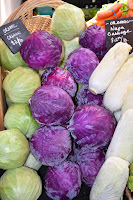Pest Program Outreach Coordinator
Have you ever looked at your vehicle’s grill and found a bee, butterfly or some other bug stuck there, unable to get out of the way as you cruised down the highway? Well, checking vehicle grills is just one of the less illustrious things our staff does at WSDA. Let me explain…
A primary way that many invasive pests enter Washington is by hitching rides when people move here from infested states, unwittingly transporting devastating pests into their new neighborhoods.
To protect our state, WSDA conducts periodic vehicle checks at weigh stations, collaborating with USDA Smuggling Interdiction and Trade Compliance and the Washington State Patrol.
Together, we conducted one such check last month at two different weigh stations: Liberty Lake and Plymouth. Between the two locations, a total of 167 inspections were performed, including inspections of 19 moving trucks.
 |
| Japanese Beetle in a pickup grill |
But the grill isn’t the only place to find invasive pests, nor is it the most worrisome as those bugs are usually dead. Normally, the most threatening are items hauled from the infested location itself, like outdoor furniture. Some pests, like the gypsy moth, require a checklist to be completed if you are moving from a quarantined area to our beautiful state.
Luckily, no living invasive pests were detected in the latest operation. There were, however, several movers who either did not do the required checklist or whose checklists were incomplete.
If you or someone you know is moving to Washington from a gypsy moth quarantine area, make sure they check for gypsy moth egg masses and have their completed checklist. Everyone is welcome in Washington, but leave your bugs behind!
Special thanks to WSDA pest biologist Jenni Cena for the photos.











